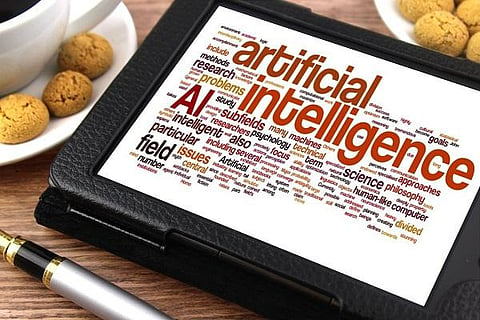

Visual search has come a long way from where it was to where it’s going to be. There have been multiple innovations in the AI space, stemming from enhanced technology adoption and an increase in use-cases. The encouraging thing about AI and visual search is its wide scope. There’s so much that you can do with the technology that it’s up to major brands to figure out what works.
CEO Matt Zeiler, founder of Clarifai, which leverages AI and visual in the ecommerce space, said in an interview with WWD that there is no dearth of innovation that can arise from empowering visual AI.
“In the retail store of 2020, brands will use AI visual search technology to provide hyper-personalized recommendations to in-store shoppers. For example, the tech will be able to sense shoppers’ physical dimensions as they model in front of the mirror and will provide recommendations and clothing options from the store inventory.”
There are a lot of applications when it comes to visual search and AI, where the technology is taking things one step ahead. Some of the biggest brands in the world have been actively working on AI and visual search for years now. Michael Karasick, vice-president at IBM Research Worldwide, has been developing the technology to be used in the fashion industry. His point of view is focused on how we view value addition as an input. In other words, how beneficial is an input format if it can replace typing or speaking.
“The fashion work started here. Nobody was thinking of AI in the creative arts and it began as a piece of science. It created machine models on patterns, colours and sizes and its impact has been spectacular. IBM is engaging with an industry that is not banking, not government; doing something relevant and working with major fashion houses worldwide,” said Michael Karasick, vice-president at IBM Research Worldwide.
Almost all major ecommerce brands have launched some form of visual search, whether that be in the B2C or B2B side of things. The value to inventory optimization and search is immense, with AI ensuring that it gets the right product on any visual search.
Abof, India’s leading ecommerce website has been using visual search for years now. They’ve seen the benefits of this technology first hand in the way that it can handle user queries.
"For a category like fashion, visual search is extremely important, probably the second-most important aspect after 3D trial, which allows you to check for size and fit," said Abof CEO Prashant Gupta.
There are many Indian tech companies that are building this technology from the ground up. They’re trying to get to the bottom of why some searches perform the way they do and what’s the context behind each search. They’re also trying to see the deeper meaning behind why some searches can pull up key insights, while many others don’t. The fashion ecommerce space isn’t able to get the latest information on where trends are going as well.
Machine learning scientist Ram Prakash, who developed Quillpad tech, has been working with the top retail websites in India. He’s trying to work out the problems associated with seeing all the insights together and having a holistic approach to trends and inventory.
“They look at the patterns and say this is doing well because this is a red colour T-shirt with a contrast collar, what they cannot do right now is look at the same red colour T-shirts with contrast collars which are not doing well. They do not have a way to see all the relevant data together. That’s another problem that we are trying to solve,” said Ram Prakash.
Another company, Visenze, is seeing incredible results though visual search. According to CEO Oliver Tan, there have been significant improvements in conversion rates and purchases for a few Indian brands right after they integrated the visual search component.
"For one of our clients in India, we've witnessed a rise of about 50% in conversion rates while using visual-search technology compared to plain text search. In the US, Amazon and Macy's have been offering this feature for some time. Consumers are crying out for a simpler search process. If you do not, they will move on to somebody else," said Oliver Tan.
While the core technology itself is doing some incredible things, there have been complexities with regard to its implementation. While every customer facing business is trying to incorporate visual AI as best as they can, few have been able to master it.
The problem lies in the fact that there is too much inventory and unless AI can have a 99% hit record, customers may not use it that much. If it does enhance user-experience in the long-term, then it will be a no-brainer for most companies to adopt it.